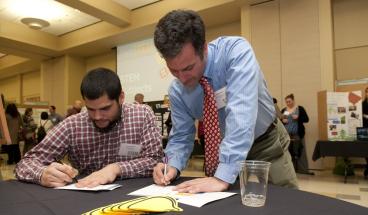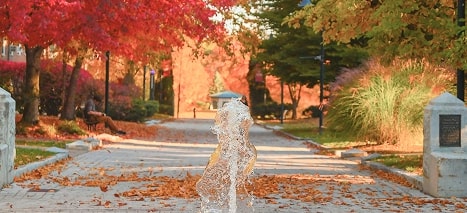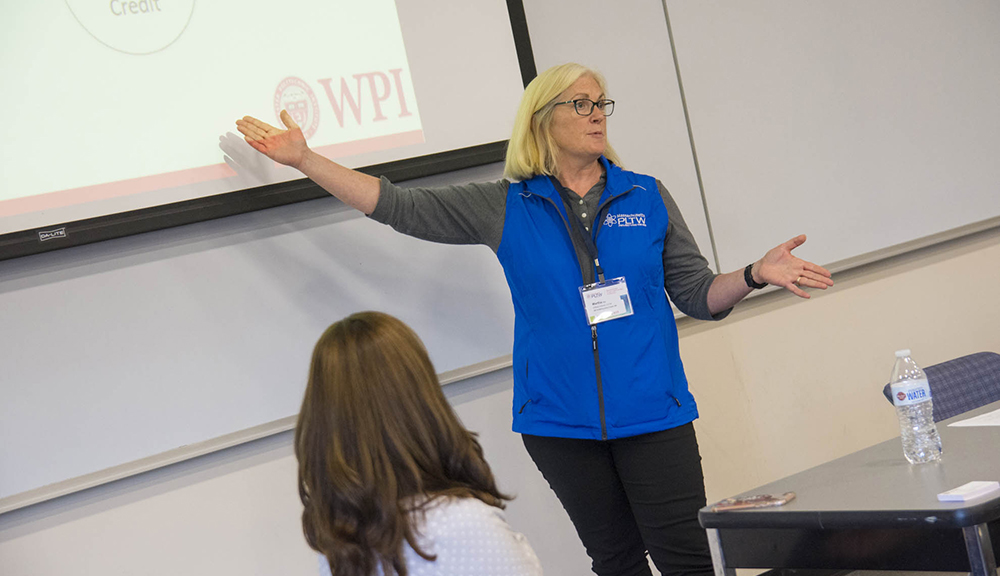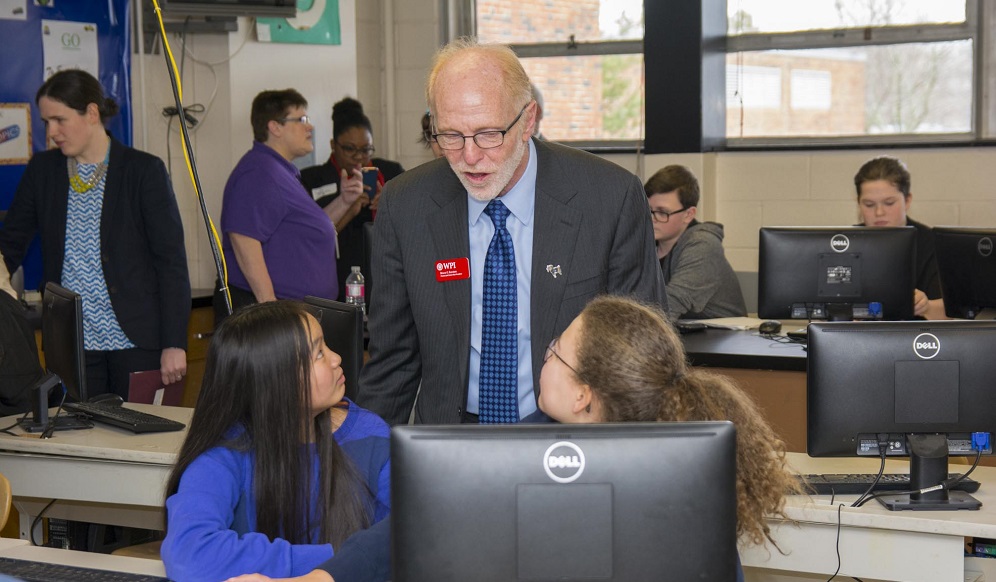The STEM Education Center at WPI is part of a new collaboration aimed at broadly spreading STEM applied-learning curriculum for teachers and students—with built-in supports—across the Bay State. The collaborative effort, a year in the making, is funded by a three-year, $225,000 grant from the Jacobson Family Foundation.
The initiative paves the way for this STEM applied-learning to be brought to more teachers, implemented in additional schools and enriched where most effective.
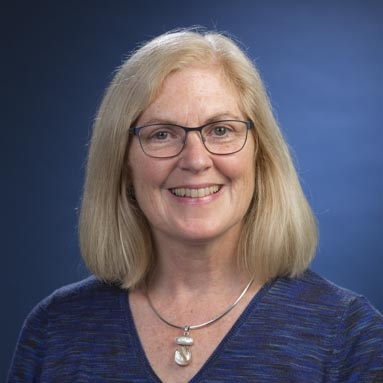
Martha Cyr
WPI is the Massachusetts University Affiliate for the nonprofit Project Lead The Way (PLTW), which provides a K-12 hands-on, STEM applied-learning curriculum. PLTW says that students who use this curriculum have a better understanding of math and science concepts and are more likely to go into STEM studies and STEM career fields. The STEM Education Center will work to help educators incorporate the student modules and units into Massachusetts classrooms.
“We continue to supply that support for teachers for implementation,” says Martha Cyr, executive director of the STEM Education Center. “WPI has expertise with educators, administration, professional development, additional advanced training, and is planning to build opportunities for teachers to network as well.”
Networking with other teachers—especially for those who are the only ones at their schools teaching PLTW in some cases—promises to be an important step in building a network of educators to share their challenges, successes and professional experiences with other teachers around the region, Cyr says, especially in their first years of teaching the curriculum.
Science brought to life
PLTW is based in Indianapolis, but has affiliates in all 50 states and the District of Columbia, and engages students in about 9,000 schools across the nation.
Its STEM curriculum is based on results, interest, and student performance. The curriculum uses hands-on assignments based on real-world problems to teach STEM subjects of science, technology, engineering and math. The goal of this funding, says Cyr, is to more than double the number of schools using the curriculum in Massachusetts, from 100 to 220 over a three-year period.
The initiative has a few components: Identifying Massachusetts Mentor Teachers who can share the PLTW curriculum with other educators; providing teacher advanced training in the curriculum; and creating other ways to benefit schools—a task that will be handled by another, brand-new group—the Boston-based Mass STEM Hub. For instance, Mass STEM Hub plans to foster partnerships with industries and PLTW schools, says Cyr, and help shore up outcome evidence.
“They will help with collection of data and think of other supports, such as PLTW students having competitions or events, across the region or across the state,” she says.
New STEM perspective
Cyr says that the collaborative effort will be announced at the Massachusetts Project Lead the Way STEM Conference, hosted by WPI on Thursday, Oct. 20.
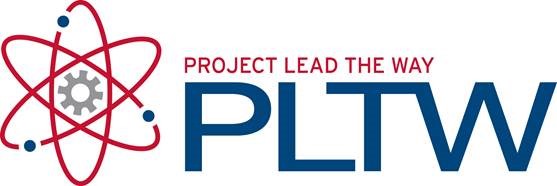 Calling it an “exciting time to be in education,” Cyr says the PLTW system of learning STEM represents a real change for educators, some of whom may be hesitant. Where the curriculum is based on a hands-on approach to problem solving and other skills, it doesn’t “let the kids memorize and regurgitate,” like other curriculum. She notes that the new system can be a difficult transition for some teachers, but a worthy investment with great reward.
Calling it an “exciting time to be in education,” Cyr says the PLTW system of learning STEM represents a real change for educators, some of whom may be hesitant. Where the curriculum is based on a hands-on approach to problem solving and other skills, it doesn’t “let the kids memorize and regurgitate,” like other curriculum. She notes that the new system can be a difficult transition for some teachers, but a worthy investment with great reward.
“What I have observed is that by end of first year, more than 90 percent of the teachers think it’s the greatest thing in their work; it transforms teaching and students,” says Cyr, even re-energizing set-to-retire teachers who decide to stay on, excited to put PLTW principles to work in the classroom.
President Laurie Leshin has been in active communication with the STEM Education Center and the Jacobson Family Foundation, which provided the grant for this work, throughout the process as well, says Cyr.
“Having these three separate entities working together will make the effort more streamlined,” says Cyr, “with components playing off one another so the system can have bigger impact,” in bringing comprehensive, hands-on STEM skills to classrooms across the state.
- By Susan Shalhoub
